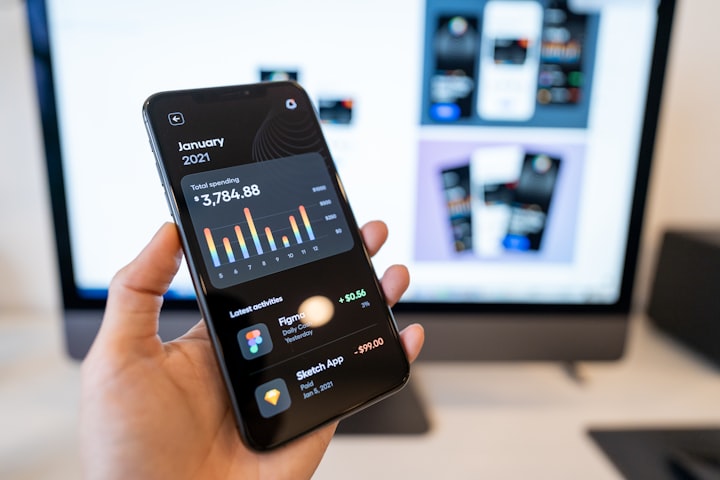What is Refresh Rate? and Why is it important?
Nowadays in the smartphone and gaming industry, there is a lot of hype about high refresh rate displays. But do you actually know what it is?

Nowadays in the smartphone and gaming industry, there is a lot of hype about high refresh rate displays. But do you actually know what it is?
Defining Refresh Rate:
The refresh rate is the number of times the image in your desktop/ smartphone gets updated/refreshed in one second. It is measured in Hertz(Hz).
1 Hz means your desktop updates the image after every 1 second. Similarly, 30Hz means your desktop updates the image 30 times in 1 second. Generally used values of refresh rate are 24Hz, 30 Hz, 60Hz, and 120Hz.
Most of your computers and smartphones nowadays use 60Hz displays. Some of the higher-end smartphones use 90/120 Hz displays. The refresh rate in gaming PCs can go up to 240 Hz.
Use this website to visualize the difference between different refresh rate values: https://www.testufo.com/refreshrate

Higher the refresh rate of the monitor, the smoother will be the movie/ gaming experience of the user. If your monitor produces more images per second, then it means that the eye receives more images resulting in a smoother view of image transition.
Most of the movies before Hobbit used 24 FPS recording. FPS stands for frames per second. It tells us about how many frames are produced every second.
You can consider it like this — for viewing a 30FPS recorded video, you need a monitor with more than 30Hz refresh rate.
The movie “HOBBIT” was shot in 48 FPS recording, twice the normal rate to render a sharper and realistic experience. This had an impact on the viewers, most of them experienced a more smooth viewing experience compared to other movies.

In the 48Hz refresh rate, the frame changes twice the number of times than in a 24 Hz refresh rate monitor per second.
Refresh rates generally affect users who are more interested in gaming. Let’s also look at similar concepts like refresh rate which may affect it.
How are they refreshed?
All the pixels in your display are not refreshed at the same time. The pixels are refreshed row by row and in each row, they are refreshed from left to right.
And after moving on to the final pixel, it will start from the start again. You can observe it when you watch a CRT monitor in slow motion.
Check out the video by “ The Slow Mo Guys” one of my favorite channels on youtube about How a TV Works in Slow Motion? —
Let’s also discuss about two of the common terms that you will come across if you are discussing about Refresh Rate — Frame Rate and Touch Sample Rate.
Frame rate:
Frame rate is the frequency at which consecutive images called frames to appear on a display. It may seem similar to the refresh rate, but it’s not. Refresh rate says how many times the monitor is refreshed, whereas the frame rate how many times the image is changed.
The refresh rate does not affect the frame rate, but it limits it. You cannot experience a 48FPS video in a 30Hz monitor perfectly.
Touch sample rate:
The frequency at which the touch screen of your smartphone or tablet looks for input from the user. Even if you have a 120 Hz screen, if your touch sample rate is less than this, then the gaming experience will not be good as the touch screen takes more time to respond to tour touch.
One of the main problems with the higher refresh rate in modern smartphones is its higher battery consumption.
It’s obvious that when the display refreshes more number of times, it will consume more power than normal. This is why most of the 120/90 Hz smartphones also have an alternate option for a 60 Hz display to increase the battery life.
There are now a bunch of smartphones from different manufacturers with 120 Hz display — Samsung Galaxy S20, One Plus 8 pro, Poco X2.
How much refresh rate do you actually need?
It depends upon the individual and what he is going to use it for. Like in normal life use, many of them will notice a comparable difference between 30 and 60 Hz displays or 60 Hz and 90 Hz displays.
But most of them will not be able to see a noticeable difference between 120 Hz and 144 Hz display. So you have to check them out yourself before choosing it.
Well, that's it for today. Hope you now have a clear understanding of refresh rates. If you like the article, give it a like and consider following me for content like this.
About the Creator
Let's Discuss
Topics related to Technology, Movies and Games.
Subscribe to our Newsletter on https://500ish.substack.com/
My Website - http://www.unbalanced.space/






Comments
There are no comments for this story
Be the first to respond and start the conversation.